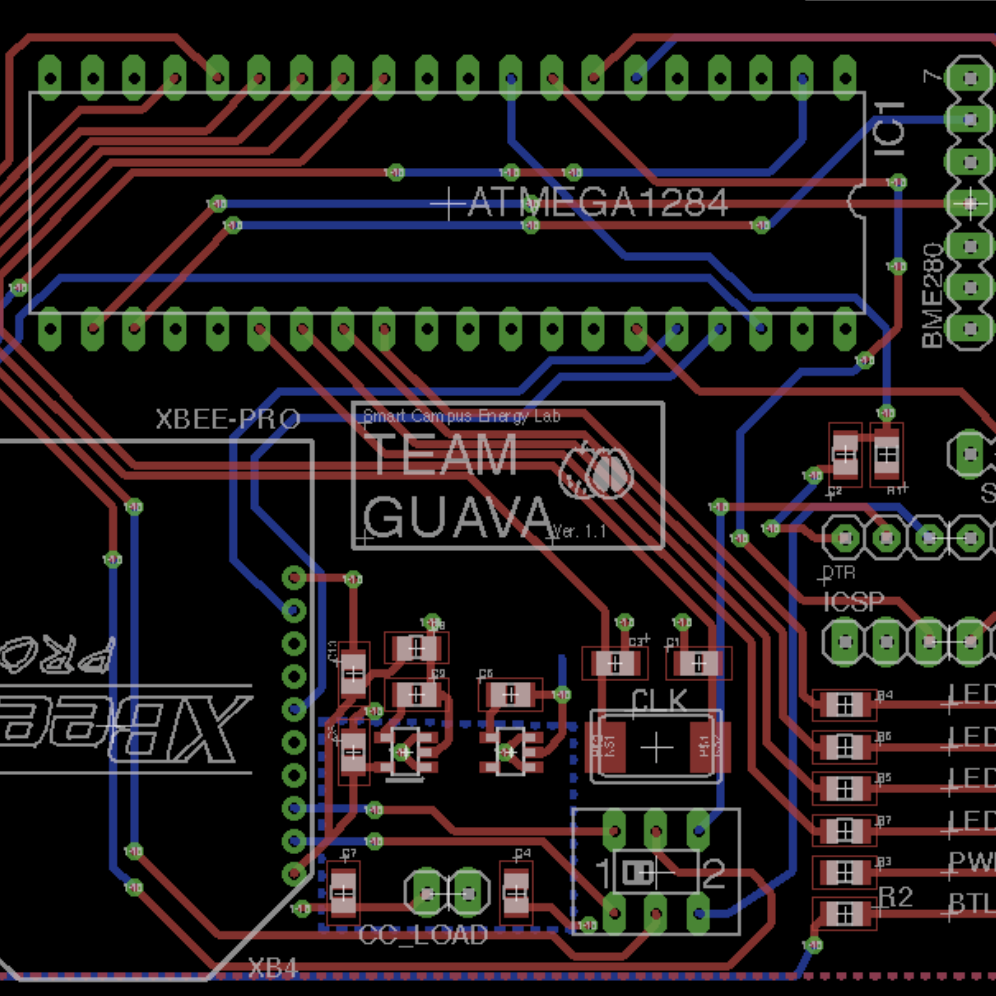Smart Campus Energy Lab




The Smart Campus Energy Lab (SCEL) at the University of Hawaii at Manoa (UHM) offers many projects for students to participate in and is one of research labs within the Renewable Energy Island Sustainability (REIS). Since the spring of 2017, I have participated in the SCEL weatherbox project whose objective is to design and develop various environmental sensor nodes that are low-cost and efficient to place on the roofs of UHM buildings. The weatherboxes are intended to collect meteorological data through various sensors and relay the data via an XBee to help with the forecasting of renewable energy resources. One example of this is to use the data from solar irradiance sensors in the weatherboxes in order to locate the best places to put solar panels on campus. In order to implement the desired weatherbox, the project was composed of two main components which consisted of the printed circuit board (PCB) design and the housing design. The project also included multiple meetings where each team would give a presentation on the progress of their design process.
For this project, I worked as a PCB designer and housing designer for team Chocolate Cosmos in the spring of 2017, followed by the lead housing designer for team Guava in the fall of 2017. Both teams consisted of the same team members; however, the objectives of each team slightly varied. The team Guava project proved to be more difficult but also seeked to improve the existing weatherbox designs by integrating a new processor in the remodeled environmental sensor node. To approach the task of designing a PCB, we began by reproducing a generic schematic that other weatherbox teams used in the past. Then, by using EAGLE, my team and I efficiently placed the parts on a small board to be printed. Both semesters, I designed a weatherproof housing design to prevent rain from entering the box that would contain the PCB and battery while also providing ventilation to the components. We continued working on the improved Guava sensor node into the spring 2018 semester where we were able to actually fabricate and populate a few boards.
From the experience, I was able to practice and learn more about hardware skills and PCB designing. I also learned how to use EAGLE and Google SketchUp as well as gain soldering skills. Not only did this project improve my technical skills, but it also advanced my communication, leadership, and presentation skills. Throughout each presentation, my public speaking skills improved greatly. Due to the many problems my team encountered throughout the designing and testing experience, I also developed better problem solving skills.
You can learn more at the SCEL Wiki or the SCEL Website.